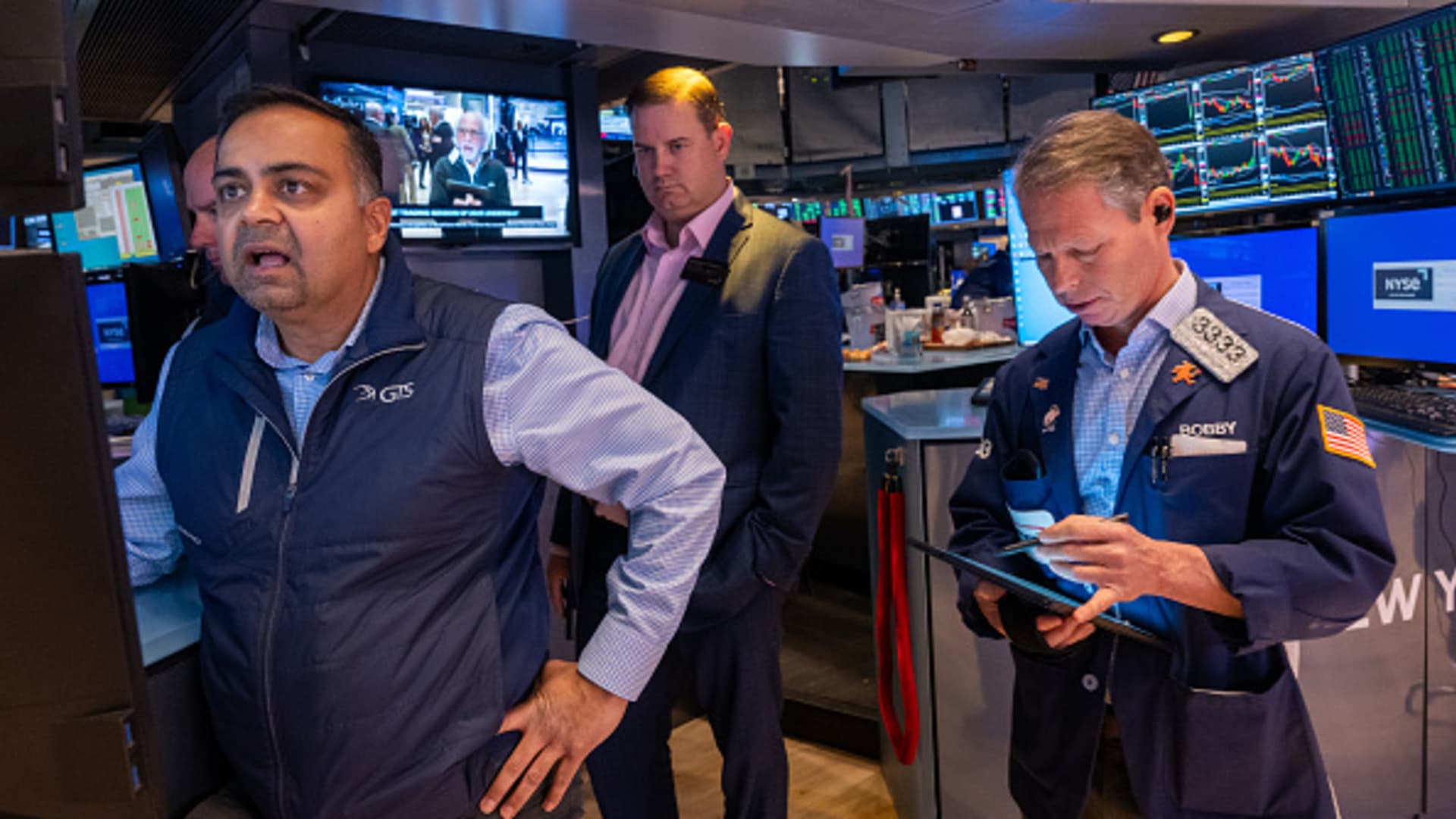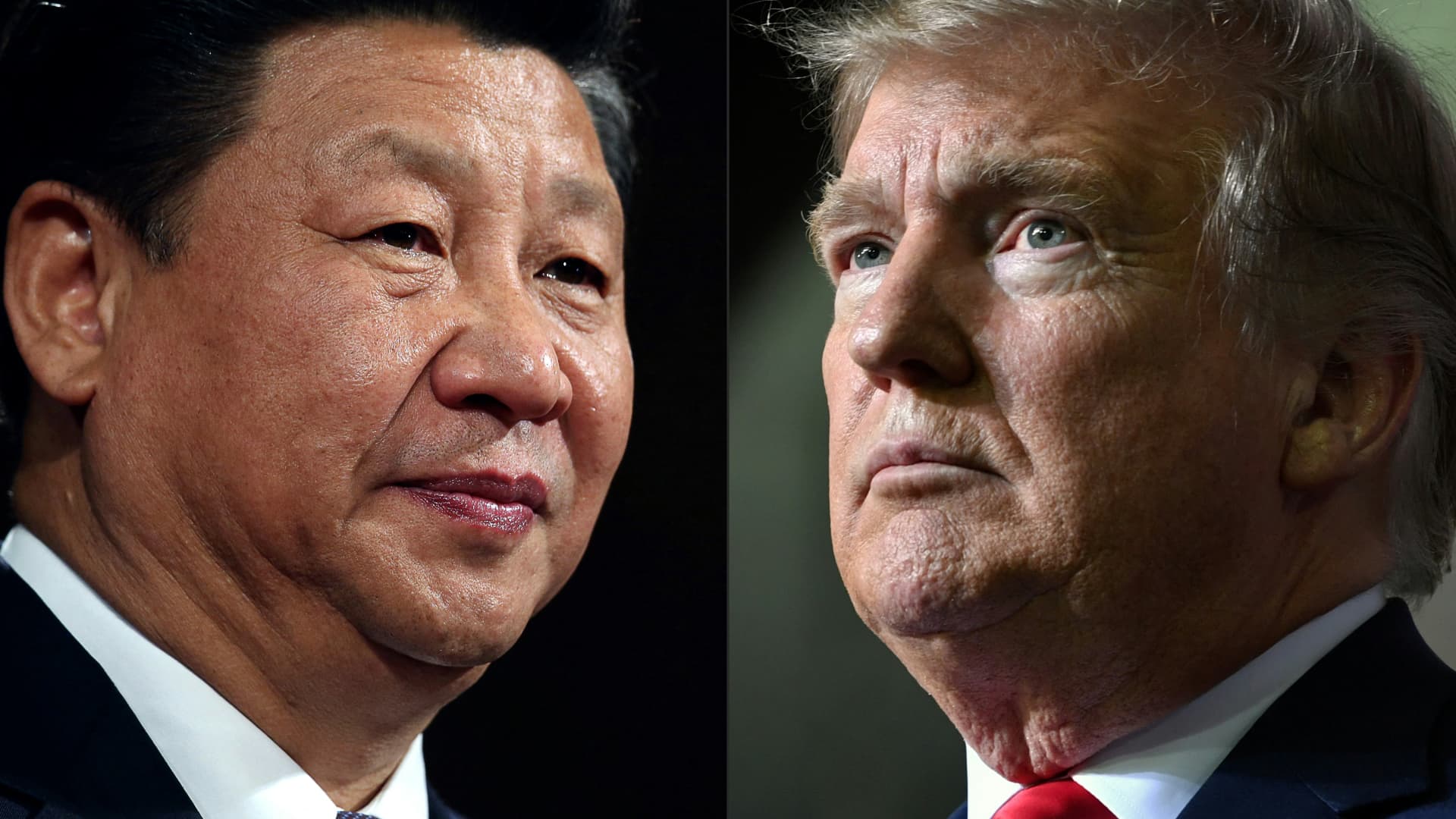Traders work on the floor of the New York Stock Exchange (NYSE) on the first day of trading of the new year on January 02, 2025 in New York City.
Spencer Platt | Getty Images
This report is from today’s CNBC Daily Open, our international markets newsletter. CNBC Daily Open brings investors up to speed on everything they need to know, no matter where they are. Like what you see? You can subscribe here.
What you need to know today
U.S. markets start the year in the red
U.S. stocks began the year on a downbeat mood, with all major indexes dipping on Thursday, giving up earlier gains. The U.S. dollar index hit its highest level in more than two years. The pan-European Stoxx 600 index added 0.6%, reversing earlier losses. Oil and gas stocks led gains, up 2.3% although Europe’s banking index lost 0.3%.
Tesla deliveries reverse gains
Shares of Tesla slumped 6.1% after the company reported that total deliveries in the fourth quarter of 2024 fell year on year. Not only was that Tesla’s first annual drop in deliveries, the figure was also below expectations, according to a consensus of estimates compiled by StreetAccount. Delivery are the closest approximation of sales reported by Tesla.
Meta’s new president of global affairs
Meta is replacing its president of global affairs Nick Clegg, a former British deputy prime minister, with Joel Kaplan, the company’s current policy vice president and a former Republican Party staffer. It’s a sign of how tech companies are positioning themselves for U.S. President-elect Donald Trump’s incoming administration in Washington.
Russia gas stops flowing
Ukraine halted the flow of Russian gas to several European countries on New Year’s Day in a widely expected move, Russia’s state-owned energy giant Gazprom confirmed on Wednesday. The European Commission said it had been working to ensure the 27-nation bloc was prepared for such a scenario — though some countries are more at risk than others.
[PRO] Sentiment near euphoria level
Investor optimism has only grown despite a rough ending to December. A barometer tracked by Bank of America indicates that investor sentiment is near euphoria level — but that’s, contrarily, a signal to sell. Savita Subramanian, the bank’s equity and quant strategist, explains what that means for investors.
The bottom line
As the first trading day of the year opened, all major indexes advanced, giving rise to the hope that stocks could begin 2025 bright and cheery.
But, like workers shedding the new year festivities and glumly marching back to the office, stocks lost their sheen, began tilting down and closed the session lower.
The Dow Jones Industrial Average retreated 0.36%, the S&P 500 fell 0.22% and the Nasdaq Composite lost 0.16%. Their loss on Thursday means the S&P and Nasdaq have closed lower for five consecutive sessions, their longest losing streaks since April.
The likely culprit? Rising Treasury yields. After dipping initially, the 10-year Treasury yield began to climb and, at 12 p.m. U.S. time, was close to touching 4.6%. That coincided with the time stocks began to decline: The S&P 500 lost around 60 points between 12 p.m. to 1 p.m.
Even though the 10-year yield eventually levelled off at the end of the day, persistently high yields are a threat to stocks because they represent a safer avenue where investors can stash their cash. When Treasurys can give a guaranteed 4.6% return, the risk of betting on stocks seems less attractive.
Treasurys might be even more appealing this year because analysts don’t expect the S&P to return anywhere near its 23.31% surge in 2024. It’s more likely to gain 9% in 2025, on a median basis, according to the CNBC Market Strategist Survey released in December.
Given that backdrop, stocks may not adequately compensate investors for the risk they are taking relative to owning bonds.
As Max Kettner, HSBC’s chief multi-asset strategist, wrote in a Thursday note, “Hawkish pivot by the Fed prompts a further rise in yields, triggering what we call the Danger Zone.”
That said, Kettner thinks the market choppiness now “should create attractive entry points given that fundamentals are still on a solid footing — we think [the first half of 2025] will bring a proper Goldilocks backdrop.”
Even a highway to the danger zone must lead beyond it to another destination eventually.
— CNBC’s Lisa Kailai Han, Sarah Min, Jesse Pound and Christina Cheddar Berk contributed to this report.











